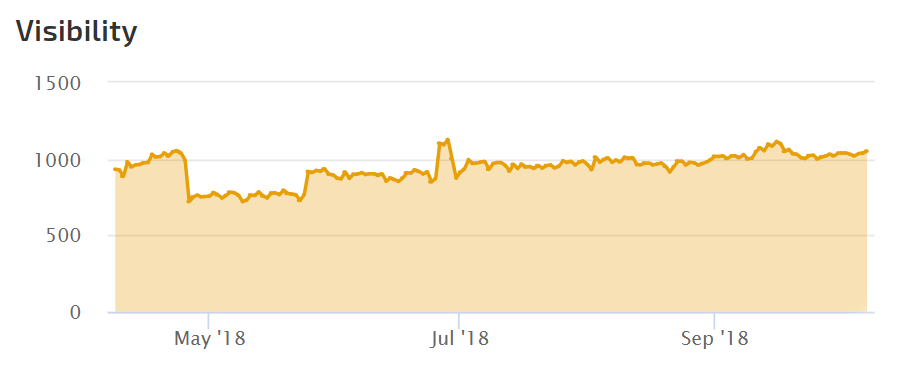SEO Reporting: How to Build Meaningful Analytics Reports
If you are interested in a custom dashboard or an Analytics audit and would like our help, please don’t hesitate to contact us.
—
The SEO report. It is a calling card for some agencies. Innovative companies use APIs to compile reports without spending manual hours. Some rely on cursory, automatic SEO reporting tools. For other companies, it’s a time-intensive and exhaustive exercise.
The SEO report should be a tool by which you can gain insights and build powerful campaigns for organic search. You might think of this as a client deliverable or a monthly expectation to appease your boss, but an effective SEO report is much more than that. It will give you an at-a-glance performance overview and allow you to spot problems and opportunities. It can cover everything from organic traffic to external and internal link-building, social media, and more.
What is an SEO Report, and What Should it Cover?
For those entering the field, an SEO report is a common name for any document meant to inform the viewer of their website’s SEO status. But creating any report is of no value if the data doesn’t answer important questions.
Here are some essential questions that should be answered quickly and effectively by your SEO report:
- What does the data tell me about our visitors?
- What direction should I take based on the data?
- Why is “X” happening?
- What dubious claims and theories can we correct?
- What campaigns should we renounce, and how can I change direction for the better?
- What data can I use to sell back the SEO investment?
What Metrics Should Be Included in Your Client’s SEO Report?
At Greenlane, we develop reports with a data-first philosophy, to which the KPIs that move your business are primary. Sure, we include the obligatory ranking, traffic, and conversion data, but we want to benchmark against the particulars that your business is based on. If our client hasn’t developed a KPI set or set goals for our SEO engagement, we will help them develop a realistic plan. We do everything possible to ensure keyword rankings aren’t the primary KPI.
Although search engine ranking reports are commonplace, rankings are not a great metric. Expect flux in search engine rankings. Keywords that typically perform for a business can rank lower in the results on any given day, only to return another day. Rankings “dance” in Google search results. If a keyword is down on the day you compile the report but high on other days, you will get a false understanding of overall growth/decline. For that reason, I focus on additional data to help understand the reality of rankings:
- Organic traffic
- Conversions
- Time on page
- Bounce rate
- Revenue
Below is a ranking trend for a keyword with much competition. If this report was made around 9/10/2018, it would look like a victory with a top-10 ranking. In truth, this keyword is not performing well. The report was just focused on a misleading day.
Instead, you should make sure to reflect the average position. The average position for the keyword above is position 48. This represents organic visibility in a clear and digestible way.
It’s important to group keywords into appropriate landing pages. Instead of thinking of each keyword independently, I prefer an organic visibility score for a page. This allows the target and non-target keywords to represent the website’s traffic. Identify the pages you are working on and average the ranks for all the keywords that are driving organic. Repeat each month for a trend.
Different SEO analytics tools offer their own visibility scores using their preferred formula. More than just averages, sometimes traffic and impression data are calculated. Here is a visibility score from Rank Ranger that tells me how well one of my essential pages performs (check out their calculation description). I’d rather learn from this report and drill into each keyword only as needed. It’s a perfect chart for any SEO reporting dashboard.

Separate Qualified Traffic within Reports
Qualified traffic is the most critical data in any Google Analytics report. We want to attract traffic that does something – make a purchase, become aware of a brand, inquire about a service, read content, and so on. The key to receiving qualified organic traffic begins by understanding your best visitors’ wants and needs. Every query done in search engines represents a need by a user. Your website data discloses this need, allowing you to update your website accordingly if you take the time to dig into your organic search data.
High click-through rates and engagement signal two things – you’re on the right track with your visitors, and you’ve convinced Google that you’re worth the traffic. Using the keyword groupings paints an even clearer picture. A good SEO report should allow you to see this and help you consider a need to improve the page or move on to another SEO campaign. Alternatively, if your reports are not showing webpage success, they should report on why and suggest the efforts that should be made.
Automate as Much of Your Reporting as Possible
In a past life, I was part of an agency that spent too much time—by hand—downloading Omniture reports (remember them?). I copied and pasted cells, customized charts, ran formulas, and beautified spreadsheets. I could make a spreadsheet look like a work of art, but it wasn’t the work I should have been doing. This exercise took 10+ hours a month, and clients would receive these reports in the middle of the month. Inefficient by today’s standards. My clients were paying me to be a report monkey. I spent far too much time building spreadsheets and needed more time analyzing them. That’s a problem.
Improved technology has given SEOs various methods for accelerating data collection. APIs from Google Analytics and Search Console can plug into Google Data Studio or Google Sheets (with a plugin like Supermetrics). No longer do we have an excuse for being a report monkey. Instead, we can use this extra time wisely. We can use this available time to find the stories in the data. We can use this time to provide actionable insights pulled from the data.
SEO Report Example [with Free Template!]
I’ve talked a bit about quality reporting but have yet to show examples of what we do at Greenlane. This is a default SEO status report designed in Google Data Studio. It’s our current “out-of-the-box” version (as of this writing). It has not been customized for client KPIs, but it’s clean and clear. If you’d like to download this to use as an SEO report template, you can do so here.



So far, it’s pretty standard stuff. So, what happens when a client has SEO metric requests? You build them in.
Additionally, in the following example, you’ll see where insights tell the story of the data. The benefit of API-driven reports is that you don’t need time to pull data. They become automated SEO reports. You can use this time to understand what is happening with the site.




There’s no limit to how much customization you can do to your report template. (If you’re using Excel or Google Sheets for your report design, here’s a helpful bunch of resources for organizing your data.) As long as the data is relevant and the insights are valuable, you’re on your way to creating the best SEO reports you can deliver. Developing the template is undoubtedly some upfront work, but it pays off in the long run.









